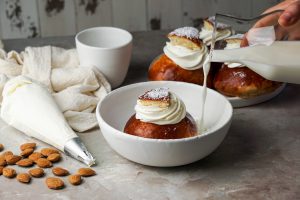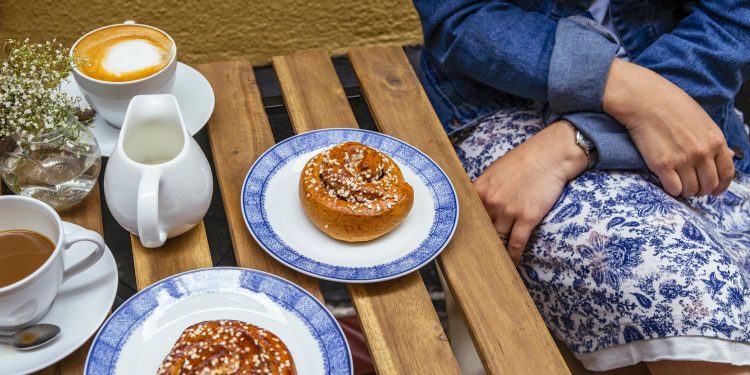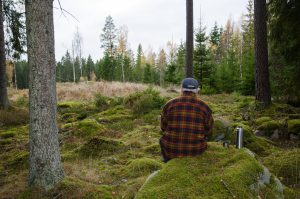In Sweden, fika is more than just a coffee break—it’s a cultural institution, a ritual that encourages people to pause, connect, and enjoy the moment. This tradition, deeply embedded in Swedish society, aligns perfectly with the principles of slow travel and adventure, where the journey is just as important as the destination. For those seeking a deeper connection with Sweden’s landscapes, people, and culinary traditions, embracing fika can transform the way they explore the country.
The Essence of Fika and Slow Travel
At its core, fika is about taking the time to enjoy a cup of coffee or tea, often accompanied by a pastry or sandwich, in good company. It’s a moment of respite, a chance to slow down and appreciate the present. Swedes practice fika at home, at work, and in cafés, but it is also a cherished part of outdoor adventures, from hiking in the mountains to cycling along coastal trails. It’s this outdoor aspect of fika that makes it a natural companion to slow travel.
Slow travel is about immersing oneself in local culture, savoring experiences, and connecting with people along the way. Unlike fast-paced tourism, which often rushes from one landmark to another, slow travel embraces meaningful pauses—just like fika does. Stopping at a small countryside bakery, engaging in conversation with locals, and enjoying a freshly baked pastry with coffee is an experience that goes beyond sightseeing; it’s a way to understand Sweden’s culture on a deeper level.
The Importance of Small Cafés and Bakeries
For travelers exploring Sweden’s rural areas, local cafés and bakeries are essential touchpoints. These establishments function much like the village pub in England or the tea salon in France—serving as community hubs where people gather, share news, and maintain traditions. In many small towns, these bakeries and cafés are lifelines, preserving local baking heritage while providing a social space for residents and visitors alike.
Stopping at a family-run bakery allows travelers to engage with Sweden’s food culture while supporting small businesses. Many cafés prioritize locally sourced ingredients, traditional baking methods, and sustainable practices, making them ideal stops for conscious travelers. In Dalarna, visitors can enjoy fika with locally foraged berries and rustic sourdough bread, while along the west coast, they might savor a slice of hallongrotta (raspberry cave cookie) made with organic butter from a nearby farm.
A Culinary Journey Through Swedish Pastries
Swedish bakeries boast a delightful array of pastries that cater to various tastes. Some of the most cherished treats include:
Kanelbulle: A cinnamon bun spiced with cardamom, often enjoyed during fika.
Prinsesstårta: A princess cake featuring layers of sponge cake, jam, pastry cream, and a green marzipan coating.
Chokladboll: A chocolate ball made from oats, sugar, cocoa, and butter, rolled in coconut flakes.
Hallongrotta: Literally “raspberry cave,” these are vanilla biscuits filled with raspberry jam.
The Semla: A Perfect Example of Fika in Slow Travel
One of the best ways to experience fika’s connection with slow travel is through the beloved semla. This cardamom-spiced wheat bun, filled with almond paste and whipped cream, is a seasonal delight that Swedes anticipate every year. Traditionally eaten on Fettisdagen (Fat Tuesday), semlor (plural of semla) were originally meant as a rich indulgence before the fasting period of Lent. However, modern bakeries now start selling them as early as January, much to the delight of fika lovers.
Historically, semlor were even regulated—there was a time when selling them outside of the pre-Lenten period was forbidden. Over the years, semla traditions have evolved, and today, new variations pop up every year, from semmelwraps to chocolate-filled semlor, each offering a unique twist on the classic treat.
The Great Semla Debate: How Should It Be Eaten?
Just like fika, the semla comes with its own traditions and debates. One of the most discussed aspects is whether to eat it on its own or in the old-fashioned style known as hetvägg, where the semla is served in a bowl of warm milk. Some traditionalists argue that hetvägg is the only authentic way, while others prefer the dry, fluffy texture of the bun as it is.
Another hotly debated topic is the filling: while almond paste is the traditional choice, some bakeries offer alternatives like vanilla cream, Nutella, or even jam. Purists insist that a semla without almond paste is not a real semla, while others welcome the diversity of flavors.
How Many Semlor Are Eaten in Sweden?
The semla is more than just a pastry—it’s a phenomenon. On Fettisdagen alone, Swedes consume around six million semlor. Over the course of the entire season, which lasts from January to Easter, approximately 50 million semlor are sold in Sweden—a staggering number given that the country has a population of about 10 million.
This level of consumption is not just a testament to the semla’s popularity but also highlights its economic importance. Small bakeries and cafés rely on the semla season for a significant portion of their annual revenue. For many rural bakeries, semlor represent a crucial financial boost, helping sustain their business through the slower months of the year. The high demand for semlor generates employment opportunities, supports local dairy and wheat farmers, and ensures that traditional baking skills are passed down through generations. By choosing to enjoy semlor from independent bakeries rather than mass-produced versions, consumers directly contribute to the survival of these essential community hubs.
A Final Thought: Traveling at the Pace of Fika
To travel through Sweden with fika as a guiding principle is to embrace slowness, intention, and appreciation. Whether stopping at a countryside bakery for a freshly made semla, chatting with a local baker about traditional recipes, or sipping coffee on a lakeside bench, fika invites travelers to immerse themselves in the moment. In a world that often prioritizes speed and efficiency, fika offers a compelling invitation: to pause, connect, and truly savor the journey. Investing in a good thermos will assure you always have a hot beverage to go with the freshbaked goods from the village bakery as you explore the countryside of Sweden.
Try Making Your Own Semlor
If you’re not visiting Sweden in the winter, you may be out of luck when it comes to finding semlor. That doesn’t mean you cannot get to endulge in the famous pastry. One of the best things about semlor is that they are surprisingly easy to make at home. With just a few basic ingredients, you can enjoy this classic Swedish treat wherever you are, or make up your own version.
 Traditional Semlor Recipe
Traditional Semlor Recipe
Ingredients:
25g fresh yeast (or 7g dry yeast)
250ml warm milk
75g sugar
1/2 tsp salt
1 tsp ground cardamom
100g butter, melted
1 egg
500g all-purpose flour
1 egg for brushing
Filling:
200g almond paste
100ml milk
300ml whipping cream
Powdered sugar for dusting
Instructions:
Dissolve the yeast in warm milk. Add sugar, salt, cardamom, melted butter, and egg.
Gradually mix in the flour until a smooth dough forms. Knead for 10 minutes.
Cover and let the dough rise for about an hour.
Shape into small buns and let rise again for 30 minutes.
Brush with beaten egg and bake at 200°C (390°F) for 10 minutes.
Let cool, then cut off the top and scoop out a little of the inside.
Mix the scooped-out bread with almond paste and milk to make a filling.
Fill the buns, pipe whipped cream on top, and replace the lids.
Dust with powdered sugar and serve, either as is or with warm milk for a traditional hetvägg experience.
Enjoy making semlor as part of your fika experience, whether at home or as a sweet reward after a slow travel adventure!

 STS
STS








